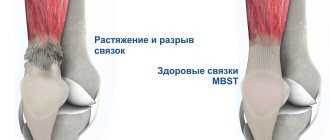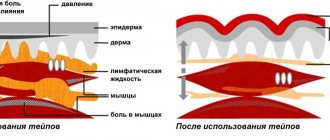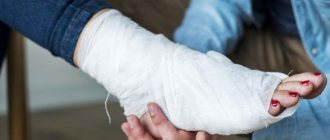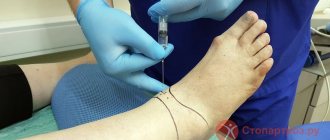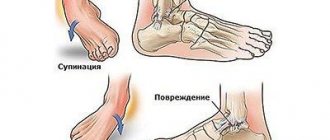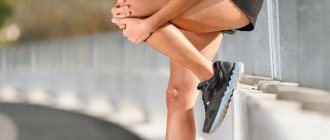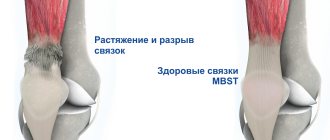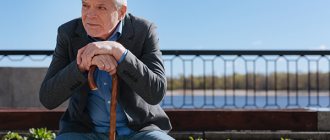The structure of the ankle joint is complex and fragile. It is often injured, which leads to pain, swelling, and loss of mobility. The most common ankle injuries: dislocation, arthrosis, sprain, fracture. Sprains lead by a wide margin. Not only among athletes: runners and football players, but also among professional dancers. It occurs when a joint experiences sudden lateral displacement under load. For example, when a person twists his leg.
But it’s not just sports that cause ankle injuries. Wearing ill-fitting shoes, excess weight, standing work, physical labor and accidents also lead to problems.
The ankle, together with the knee and hip, is a large joint in the body. It provides stability and mobility, carries the weight of a person, and absorbs shock when jumping and walking. He experiences heavy loads every day. The ankle joint is a support for the whole body, thanks to its work we stand and walk. Like other joints, it is susceptible to arthrosis. With age, this disease is diagnosed in eight out of ten residents of the country. Arthrosis develops over years and requires long-term treatment.
To maintain ankle health, various methods are used: both surgical and medicinal, and those that do not require intervention.
Kinesio taping is a popular and effective method of non-invasive therapy for foot joint problems. It is designed taking into account anatomy and has a complex effect. Taping is the application of special patches to the skin. They have sensory, vascular and muscular effects:
- increase blood circulation and lymph flow;
- stimulate metabolic processes;
- accelerate the healing of damaged tissues.
What is a sprain?
Damage to one or more ligaments that stabilize the ankle joint is a sprain. In most cases, injuries of this nature occur during various exercises due to twisting or dislocation. That is, when the natural range of motion of a joint is significantly exceeded by an external force. As a result of unfavorable movement, the joint capsule or surrounding ligaments and muscles are overstretched, which leads to injury. In some cases, a slight popping sound may be heard, which is a sign of a fiber in the ligament breaking. Damage can be in the upper part of the foot, the inner part - the location and degree of stretching depends on the type and strength of the movement.
Typical signs of a sprain:
- Mild or severe swelling;
- The appearance of bruising;
- Redness of the skin;
- Pain during movement;
- Increased skin temperature at the site of injury;
- Pain at rest when pressing on the damaged area.
How to do taping
In order for taping to give the maximum therapeutic and analgesic effect, you need to adhere to the following rules:
- For a better fit of the tape, remove hair in the areas where it is applied. To remove it, it is better to use a trimmer, since razors and epilators damage the skin.
- If the hair is too abundant, use a special backing for the tape.
- Degrease the skin with a 70% alcohol solution.
- Round the edges of the tape so that it does not cling to clothing or equipment.
- Do not touch the adhesive base of the tape with your hands. For comfortable application, leave a 3-5 cm paper backing on the edges, which can be removed at the last moment.
- Before gluing the tape, the muscles and skin in the area of application should be stretched as much as possible.
- Avoid over-tensioning the tape. Taping gives maximum effect at a tension of 0-50%.
- Rub the tape to activate the adhesive base. Within half an hour after applying the tape, under the influence of skin temperature, the properties of the glue will reach their maximum effect.
- If the tape is applied correctly, the technique does not lead to discomfort. If numbness, pain or discoloration of the skin occurs, remove the application immediately.
- After applying the tape, sprinkle its edges with special talcum powder. Thanks to this procedure, the edges of the tape will no longer be sticky and will not stick to clothing.
Help with ankle sprains
The first thing that is recommended is to immediately stop physical activity. The affected part of the body should be completely at rest to eliminate any risks and prevent the situation from worsening due to additional stress on the damaged ligaments. The next step is cooling the affected area. This is necessary to prevent swelling. In addition, the process of hypothermia usually alleviates the condition, as it helps relieve acute pain. Next you need to provide compression. This is where elastic sports patches or kinesio tapes come to the rescue. Tapes are applied around the ankle with slight tension to provide the required degree of compression and fix the damaged area. Treatment is most often conservative and aimed at alleviating the condition. Surgical intervention, which consists of strengthening the ligaments, is necessary for a minimal percentage of patients.
It is important to remember that ice or cold packs should not come into direct contact with the skin, as this can cause frostbite. To create an intermediate layer, use a clean, dry cloth or napkins.
Kinesitherapy is an important part of rehabilitation
This direction is a special science with an individual approach in each individual case. The complexes of medical and health procedures being developed depend on the scale of the damage. Experts identify several areas, the use of which is advisable in case of injury to certain parts of the body:
Clavicular ligaments. In case of injury to the acromioclavicular joint, kinesitherapy is prescribed for 12-14 days. Specialized exercises should be carried out until mild pain appears. The program consists of the following classes:
- in the supine position, the patient slowly and carefully spreads his arms with an amplitude of 90⁰;
- performs rotational movements with the limbs while standing;
- raises his hands straight in front of him and slowly lowers them.
Knee tendons. When the cruciate ligament ruptures, doctors systematically increase the load. At the first stage of rehabilitation, all exercises are gentle; classes are carried out in a lying or sitting position in order to minimize the load:
- the observed slowly flexes and straightens the injured limb;
- strains the thigh muscles;
- in a sitting position produces walking movements.
As the load increases, the patient begins to perform half-squats with support on the handrails. The movements of rolling the leg heel-toe and in reverse order with the help of a ball are connected.
Shoulder joint. Therapeutic and recreational activities begin with gentle loads, which gradually increase. All sudden body movements are excluded. The patient works standing, throws the ball, rotates his arms. As the load increases, push-ups are added, first with emphasis on the wall, and then full presses from the floor.
The Importance of Medical Massage
This type of health procedures is an important component of the overall rehabilitation program. The work of experienced massage therapists is aimed at:
- relief of inflammation and swelling;
- resorption of bruises;
- improved blood circulation;
- restoration of lymphatic drainage.
Restorative therapeutic massage is prescribed individually. Specialists take into account the scale of damage and the location of the injury.
Knee ligaments. It is one of the most difficult types to perform massage. Such interventions require especially increased attention from a specialist, taking into account the accumulation of blood and lymph fluid in the affected area.
The main goal of such manipulations is to restore lost muscle tone, restore active blood flow and resolve the accumulation of lymphatic fluid in the injured area.
Shoulder joints. The main goal of a healing massage is to relieve swelling and minimize fluid accumulation. The massage therapist begins the procedure gradually. Initially, the neck muscles are warmed up, then the affected area is gradually treated. The maximum permissible time for treatment procedures should not exceed 10 minutes. The specialist works with gentle stroking movements, simultaneously working on the back and front surfaces. The patient is in a sitting position.
Ankle ligaments. If the Achilles tendon is injured, the massage is performed with the patient lying down; a pad is placed under the affected limb. The massage therapist acts delicately, rubbing and stroking the injured leg on both sides. Particular attention is paid when massaging the rupture site itself. All movements are made in the direction from bottom to top and last no more than 5 minutes.
Who is most susceptible to ankle sprains?
Some non-sports people have weak ligaments, making them more susceptible to injury. People with flat feet, poor reaction time or muscle weakness are also most likely to suffer from this problem. If the activity is related to active recreation and sports, it is also worth familiarizing yourself with the recommendations for first aid for an ankle sprain. When playing basketball, running on uneven ground, playing football and tennis, it is easy to get injured with any careless movement. A sprained big toe is also a classic. Such an injury occurs not only in sports, but also at home - you can simply “catch” on some piece of furniture or get injured on the threshold of a half-open room door. In any situation, it is important to take timely measures to alleviate the condition and consult a specialist.
Basic diagnostic methods
1. Clinical examination
The question of whether one or more ligaments are torn can, in most cases, be resolved upon examination. The traumatologist examines whether there is increased mobility in the ankle joint. Depending on the condition, there are 3 degrees of severity.
- minor damage to individual fibers while maintaining the integrity and continuity of the ligaments.
- multiple tears, partial damage to the capsule.
- complete rupture and pathological mobility of the joint.
In some situations, a clear classification and accurate diagnosis is impossible due to pain and significant swelling. In such situations, a specialist prescribes a diagnosis.
1. X-ray examination
An ankle fracture is present in only about 5-15% of all sprains. An x-ray is prescribed if there is a clear suspicion of a rupture. This is the case when certain pressure points are very painful, or the patient is unable to move due to severe pain.
Duration of the rehabilitation period
The recovery time after ligamentous ruptures varies. They depend on the type and extent of the injury. In case of partial damage, conservative, classical treatment methods are used, and in case of complete rupture of the tendon and its separation from the base of the bone, doctors use surgical interventions.
In case of minor trauma to the ligamentous apparatus, young and strong patients are given a splint for a period of 20-25 days. Orthoses are used to treat elderly, weakened people. Complete rehabilitation can take up to 3 months and depends on the condition of the body. Age also becomes important:
- Young patients. In strong and healthy people, regeneration processes proceed quite quickly. Damaged areas receive sufficient amounts of essential nutrients for important regenerative biochemical reactions.
- Older people and those in poor health will take much longer to recover. A worn-out body does not produce the necessary collagen well, which prolongs the time of connective tissue resuscitation.
The most difficult situation is when the tendon is completely separated from the bone base. In this case, patients are prescribed plastic surgery. Treatment is almost always carried out by surgical intervention. And the rehabilitation time for such patients can last up to six months.
What is treatment with tapes?
An ankle sprain usually does not require special treatment. Patients recover within several weeks or months, depending on the extent of the damage. Taping the ankle joint is an easy way to resume normal activities faster. In the damaged area, the elastic plaster is fixed in such a way as to ensure support of the ligaments in the correct position and thereby reduce the load on the damaged area. Due to its high stretchability, the elastic patch does not interfere with movement, but effectively affects the damaged area. In general, the task of taping is to ensure stabilization of the ankle joint and activation of natural physiological processes, such as blood supply, lymphatic drainage, and venous outflow. This contributes to the speedy restoration of lost functions and, accordingly, faster recovery of the patient.
Useful information: sports taping is an effective technique that is widely used not only for sprains, but also for many other injury-related conditions. Elastic tape for athletes is a real salvation after a fracture, swelling, or a heel bruise. Tapes are also used for cerebral palsy, foot valgus, and facial nerve paresis.
How often to change tape
If the tape is applied according to the above rules, it stays on the body for 3-7 days. The duration of wearing depends on the area of application of the tape. For example, the tape will last less on an arm or leg than on the back or chest.
The tape allows air and moisture to pass through and dries quickly after a shower or swimming pool. To extend the life of the tape, do not rub the area where it is applied with a washcloth or vigorously wipe with a towel.
To remove the tape painlessly, you can wet the application with hot water or lubricate it with cosmetic oil.
What measures should be taken to prevent sprains?
Proper distribution of the load when lifting weights, wearing correct and comfortable shoes, caution on slippery surfaces, warming up before performing physical exercises - these are not all the measures. To prevent sprains, high-quality kinesio tapes are often additionally used. Stylish elastic bands and their secure fit help reduce the risk of ankle sprains and prevent other common injuries. Taping the big toe joint, ankle joint, or any problem area during training is a way to stay healthy.
Which tape to buy for an ankle sprain
The effectiveness of the procedure and the comfort of wearing the sports patch are directly related to its quality. Optimal size, hypoallergenic adhesive base that ensures reliable fixation, and stretchability are the main selection criteria. Tapes from a Korean manufacturer have the best characteristics today. The “BBTape™” line of elastic tapes offers solutions for use in any direction, including for taping the ankle joint in case of injury. The assortment of tapes comes in various sizes, designs, and materials. Elasticity similar to human skin allows the sports patch to be worn in complete comfort. Watch the video to understand how these tapes work.
SUBSCRIBE TO OUR CHANNEL OF THE INTERNATIONAL TRAINING CENTER BBTAPE ON YOUTUBE AND LEARN ALL THE SECRETS OF TAPING FROM FIRST HANDS!
Recommended Articles
How to choose a facial tape in 2021 Kinesio facial tapes are elastic bands that have been used for treatment, rehabilitation and rejuvenation of patients for more than 40 years. They are made of natural cotton/nylon/artificial silk with a hypoallergenic adhesive base.
Facial taping schemes for wrinkles Facial taping is a cosmetic procedure that rejuvenates the skin and eliminates wrinkles. It is carried out using kinesio tapes - elastic cotton tapes with hypoallergenic glue that have a beneficial effect on the body.
Facial taping at home Every day, the taping procedure is becoming increasingly relevant, and one of its most popular varieties among women of different ages is facial taping at home, which has appeared relatively recently in cosmetology.
Facial taping Facial taping (kinesio taping) eliminates wrinkles and wrinkles on the face, reduces double chin, and improves the overall condition of the skin. Such procedures are performed without surgery and are suitable for women aged 25-70 years. They are based on the impact on deep muscles and fascia using natural cotton ribbons, which improve blood and lymph flow in the head area. Below we will look in more detail at the principle of operation of this method, its advantages and disadvantages.
Contraindications
Kinesio taping of joints is common among athletes and doctors. Progressive orthopedists include the application of tapes in the treatment of valgus in patients of different ages.
The technique is safe and widely used. However, taping also has contraindications:
- oncological diseases;
- endocrine disorders;
- weak and prone to injury skin;
- heart and kidney failure;
- skin diseases with rashes and peeling;
- thrombosis.
- Before the first procedure, it is recommended to consult a doctor.
